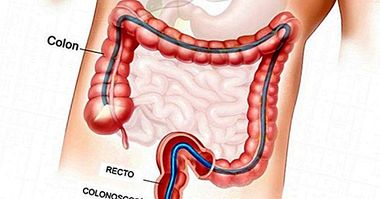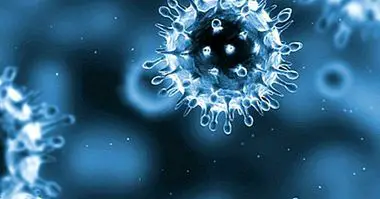People with AIDS: these are their special needs
Acquired Immunodeficiency Syndrome or AIDS is one of the biggest pandemics worldwide that exist today, being still today an incurable disease of great severity. The suffering of AIDS is a severe blow for those who suffer from it, being a very serious condition in which any infection can become complicated to dangerous levels and, without treatment, even deadly.
In the absence of a curative treatment, the prevention of this disease is fundamental, and there is a vast amount of information available about both AIDS and human immunodeficiency virus infection (which originates it).
But despite the fact that there are large prevention campaigns, many people do not just know what it is exactly or understand the emotional suffering of those who suffer from it. What is this disease and how do people with AIDS live with their condition? How can this disease be treated? We will talk about it along the following lines.
- Related article: "Dementia associated with HIV: symptoms, stages and treatment"
Symptoms of Acquired Immunodeficiency Syndrome
It is called Acquired Immunodeficiency Syndrome or AIDS to the last stage of infection by the human immunodeficiency virus or HIV, being a very serious syndrome that appears when the immune system has been practically destroyed and stops being able to deal with infections. Specifically, those who have it have a number of T lymphocytes (especially CD4 +) below 200 per cubic millimeter of blood, something insufficient to protect the body from opportunistic infections or certain cancers (some of which increase the possibility of appearance) .
Although HIV infection itself may not generate symptoms, if this infection leads to AIDS, the appearance of sudden and rapid weight loss, fatigue at the minimum effort, headaches, fevers, edema in the lymph nodes are frequent. , diarrhea that may continue for a month, kaposi sarcomas (vascular tumors in the form of spots and red lesions that in fact can in many cases be one of the clearest signs of AIDS).
All this is due to the affectation of the virus , as well as the loss of the ability of the immune system to protect itself. In addition to this, the symptoms of opportunistic infections that may happen, such as tuberculosis (the main cause of death of infected people in African countries) may be added.
It is common that neurological or nervous alterations also appear, such as motor slow down, tingling or loss of muscle tone. In some cases cognitive impairment and emotional and behavioral problems also appear , and sometimes even it can generate a fast dementia in which the patient loses faculties quickly until his death a few months later.
All this without taking into account the deep emotional impact that the fact of receiving the diagnosis implies, which often generates panic and anxiety and can easily lead to the suffering of a depression. The person with AIDS can have a constant feeling of being threatened and in danger , have a feeling of lack of control over the situation, hopelessness, feelings of guilt and fear of their future. In some cases, ideas and suicide attempts may also appear.
In addition, it has to face a situation with deadly potential that will generate the need to change the habits of life , such as taking medication or other self-management strategies. Finally, it can also lead to the loss of a partner, work or even travel restrictions.
It is important to bear in mind that, fortunately, AIDS today is a syndrome that does not have to appear in those who are infected with HIV, since The existing treatments, although they do not cure the infection, do allow control . Now, in the absence of adequate treatment, most people will develop it.
Also, when there is no treatment (especially in those countries with a poor health system, such as in poor areas of Africa) AIDS can cause death a few years after its appearance, which is a problem that remains very serious and that causes the death of millions of people even today (although it is not so common in Western society).
- Maybe you're interested: "The 5 types of viruses, and how they work"
How do people with AIDS get it? Contagion
AIDS is, as we have said, a syndrome that occurs in the final and most severe stages of HIV infection, the latter being the cause of Acquired Immune Deficiency Syndrome. Said infection reaches the human organism through contact between mucous membranes and infected fluids , mainly blood and sexual fluids. Breast milk could also cause the transmission of the virus. Other fluids such as saliva, feces, mucus, vomit or urine have a very limited or no viral load.
Thus, the infection usually comes through the maintenance of unprotected sex in which they come into contact with mucous membranes or through the shared use of syringes in drug addicts, or razor blades. Formerly it was infected through blood transfusions, although at present this is not likely.
It could also be spread from mother to child in the case of pregnant women , at the time of delivery or during breastfeeding. However, casual contact, hugs, kisses, sharing cutlery or glasses, using the same toilet or bathing in the same pool are not contagious methods.
It's important to put attention on what is contagious is the HIV virus, not AIDS itself . From the infection, the worsening of the situation will be progressive, expanding the virus through the body and increasing the viral load while destroying the lymphocytes and the immune system.
Among other things, there is a decrease in lymphoids (which generate lymphocytes) for example in the digestive tract. Initially it is usual that symptoms do not occur, although in the long run and if you get to suffer from AIDS the previous problems may appear.
Treatment of this disease
AIDS is a serious condition that without treatment can cause death in a few years . But even though it is still a very serious condition in areas with a sanitary level, there are enough treatments that make the survival rate even when HIV leads to AIDS is much higher, not being a death sentence as before (although it is still a serious illness).
The first of the treatments that must be taken into account is the pharmacological, being like in other phases of the infection the taking of antiretrovirals necessary to maintain the remains of the immune system, slightly increasing the levels of lymphocytes and decreasing the viral load to the pair that diminishing the possibility of suffering other infections, improving both the life expectancy and the quality of it. For this, it is used a treatment that includes multiple antiretrovirals, such as zidovudine or tenofovir .
However, it is likely that this treatment may cause the inflammatory syndrome of immune reconstitution, an alteration of inflammatory type that does not however prevent the treatment from being followed.
Given that the immune system has already lost most of its capacity to defend itself in AIDS, it is essential to carry out periodic checks (every six months or one year) and employ preventive measures to avoid as much as possible the arrival of opportunistic infections, as well as to control the possible emergence of tumors (more frequent and dangerous when AIDS exists). In addition to this measures should be taken to prevent possible bone, liver and kidney damage, and control and encourage the feeding and avoidance of drugs and alcohol.
Psychological care for people with AIDS
People with AIDS are suffering from one of the most feared diseases worldwide, something that undoubtedly and as we have said previously can generate a series of serious emotional and cognitive complications that can even worsen their health status. In this sense, those affected by this disease may require psychological treatment .
The first thing to keep in mind in these cases is that the subject is facing a very distressing situation, requiring emotional containment and the possibility of expressing their fears, doubts and thoughts in an environment where they do not feel judged and that generates the enough confidence. It will also need, especially in case the diagnosis is unexpected (for example a case that did not know the fact of being infected until then), psychoeducational guidelines to understand what is happening and what preventive measures should be taken.
It is essential to work adherence to treatment with antiretrovirals, as well as to the extent possible the prevention of substance abuse and risk practices.
It is not uncommon for some people with HIV or AIDS to think that because they already have the infection they can have unprotected relationships with other people with the same disease, but the fact is that since there are a variety of strains of HIV, it could generate superinfections much more dangerous and difficult to treat. Psychoeducation is not only necessary for the patient himself , but it can also be essential for the couple of this and / or their closest environment.
Another aspect to highlight is the need to work on the significance of AIDS for the patient, how the person lives, his / her state of health, the meaning it gives him / her and how he / she feels about it.
In addition to this it will also be necessary to work on the possible existence of vital barriers that the subject has raised, limiting for example their social life due to fear or isolating themselves due to feelings of guilt or rejection . In this sense, it is important to assess what type of barriers it has generated, why and what effects they have in its life, to later rethink the need for a change that breaks down these barriers and facilitates its day to day.
Another noteworthy element to work with is the lack of perception of control, as well as sociability. Problem solving and social skills training can be fundamental, as well as programming enjoyable activities.
Working with values and the cognitive restructuring of maladaptive beliefs and false AIDS myths are also very helpful, especially in those cases with anxious or depressive problems (especially in those who have suicidal risk). Another measure that can help them to a large extent is to go to mutual aid groups or associations of people affected by the disease, since they make it easier to feel understood and share their experiences as well as being able to learn different ways of acting or living with the disease.
Bibliographic references:
- Avelar, V.Y .; Cornejo, I.B. and Torres, J.D. (2011). Psychological effects in people of both sexes between the ages of 20 to 50 years diagnosed with HIV in the period from January 2006 to June 2010 pertaining to the Salvadoran foundation for the fight against AIDS "María Lorena" (CONTRASIDA) of the municipality of San Salvador. El Salvador University. Faculty of Sciences and Humanities. Department of Psychology
- Gulick, RM. (2016). Antiretroviral therapy of human immunodeficiency virus and acquired immunodeficiency. In: Goldman L, Schafer AI, eds. Goldman-Cecil Medicine. 25th ed. Philadelphia, PA: Elsevier Saunders; 2016: chap 388.
- Vyas, J.M .; Zieve, D .; Conaway, B. et al. (2017). HIV AIDS. MedlinePlus [Online]. Available at: //medlineplus.gov/english/article/000594.htm.



















